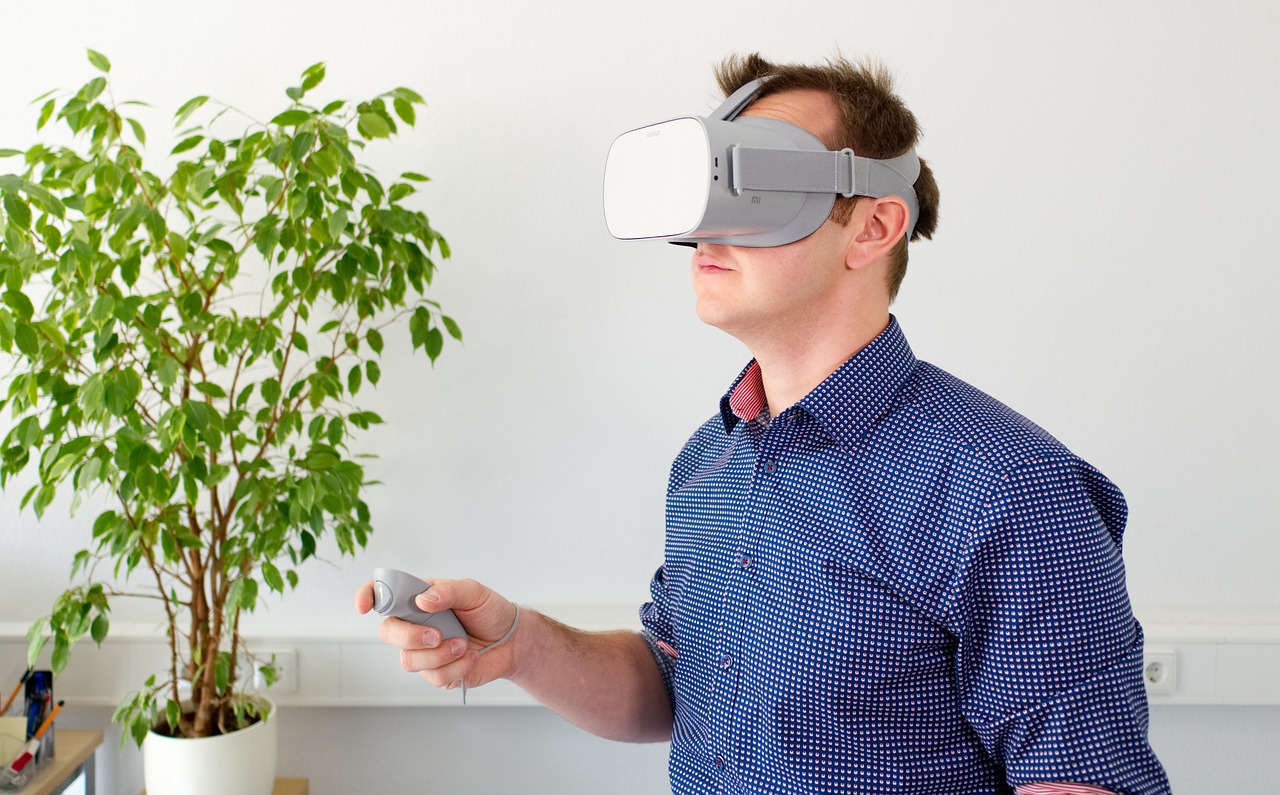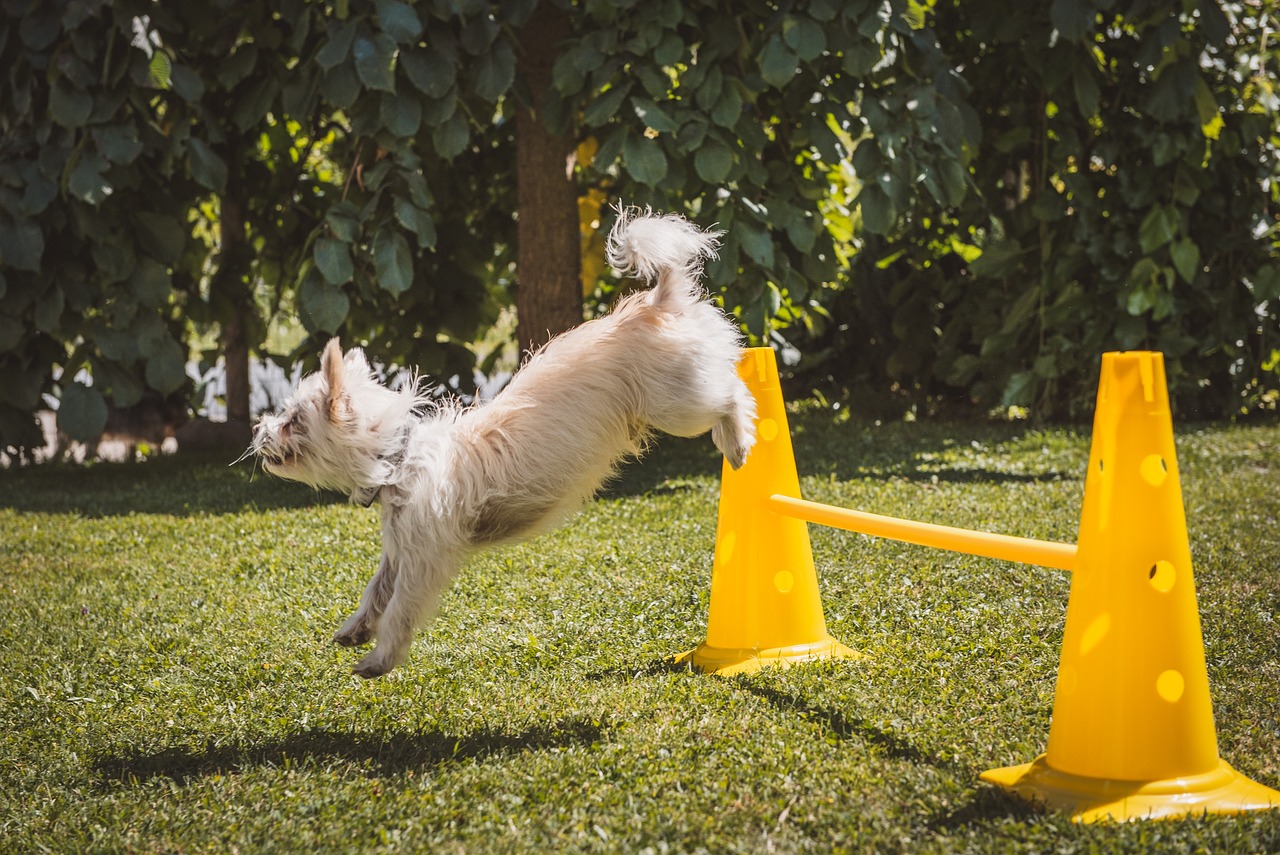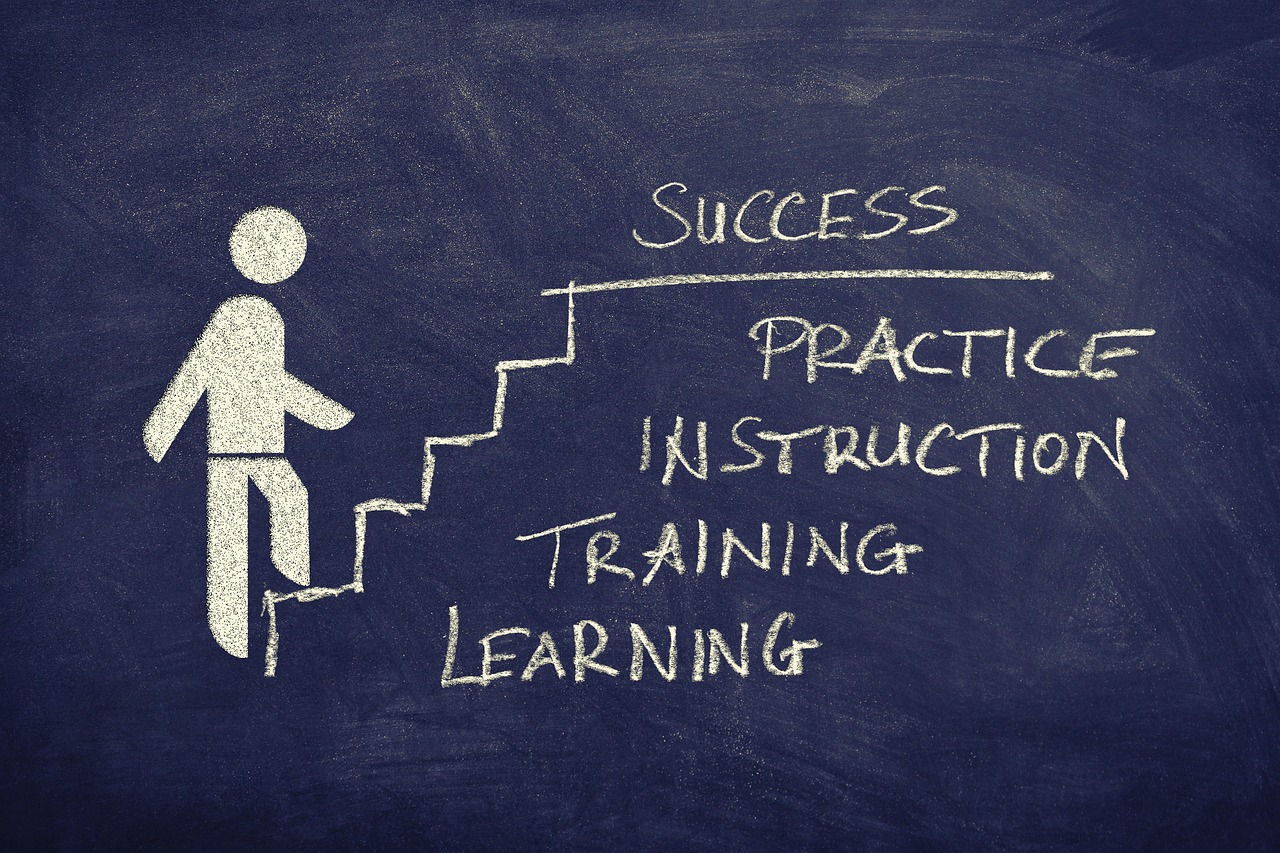How VR Supports Joint Operations and Collaboration Training
Virtual reality (VR) is not just a buzzword anymore; it's a revolutionary tool that is reshaping the landscape of joint operations and collaboration training. Imagine stepping into a fully immersive environment where you can practice complex strategies without the fear of real-world consequences. That's the power of VR! It allows teams to engage in realistic simulations that enhance their operational effectiveness and teamwork. In this article, we will delve into how VR is transforming training, the benefits it brings, the challenges faced in its implementation, and its future potential.
When it comes to joint operations, the ability to simulate intricate environments is crucial. VR plays a pivotal role in this aspect, enabling teams to practice and refine their strategies in settings that mimic real-life scenarios. Think of it like a flight simulator for military operations; it provides a safe space to make mistakes, learn, and grow. By immersing participants in these virtual environments, they can better prepare for the unpredictable nature of actual missions. This preparation not only improves their skills but also builds confidence, which is essential in high-stakes situations.
One of the standout features of VR technology is its ability to enhance collaboration training. Participants can engage in immersive experiences that promote communication, teamwork, and problem-solving skills. Imagine a group of soldiers working together to defuse a bomb in a virtual cityscape. They must communicate effectively, coordinate their actions, and think critically to succeed. Such scenarios foster a sense of camaraderie and trust among team members, which is invaluable when they face real challenges in the field.
The level of realism that VR brings to training scenarios is unmatched. Participants can experience a wide range of situations—from combat in dense urban environments to managing a humanitarian crisis in a disaster-stricken area. This exposure prepares them for the complexities of real-life challenges, making decision-making second nature. With VR, trainees can practice their skills repeatedly, honing their reactions and strategies until they become instinctive.
VR technology allows for the recreation of diverse environments and situations. Whether it's navigating through a war-torn city or responding to a natural disaster, the possibilities are virtually endless. This diversity in training contexts enhances adaptability and readiness, enabling trainees to switch gears and apply their skills in various scenarios. The flexibility of VR means that training can be tailored to meet specific operational needs, ensuring that every participant gains relevant experience.
One of the most significant advantages of VR training is the ability to receive immediate feedback. During VR sessions, participants can see how their decisions impact the outcome of a scenario, allowing them to identify areas for improvement. This real-time assessment is crucial for enhancing the overall learning experience. Just like in a video game, where players learn from their mistakes and adjust their strategies, trainees can refine their skills on the spot, making them more effective when it counts.
Implementing VR training solutions can also be more cost-effective than traditional methods. Consider the expenses associated with travel, accommodation, and resource allocation for in-person training. VR eliminates many of these costs, providing scalable training solutions that can be accessed anytime and anywhere. This accessibility means that even personnel in remote locations can benefit from high-quality training without the associated costs of travel.
Despite its many advantages, there are challenges to adopting VR for training. Technological limitations, the need for specialized equipment, and potential resistance from personnel accustomed to conventional methods can pose significant hurdles. However, overcoming these challenges is essential for maximizing the benefits of VR training.
Access to advanced VR technology can be a barrier, especially in resource-constrained environments. Not every unit or organization has the budget to invest in the latest VR equipment, which can lead to disparities in training opportunities. It's crucial for military leaders to prioritize funding and resources to ensure that all personnel have access to these transformative training tools.
Change can be hard, especially when personnel are comfortable with traditional training methods. To facilitate a smooth transition to VR training, effective change management strategies are necessary. Demonstrating the benefits of VR and showcasing its ease of integration into existing training programs can help alleviate concerns and foster acceptance among personnel.
As technology continues to evolve, the future of VR in military training looks incredibly promising. Advancements in realism, interactivity, and accessibility are paving the way for more effective joint operations and collaboration training solutions. Imagine a future where every soldier can train in a hyper-realistic environment, honing their skills without the constraints of time and location. The potential is limitless, and the military must embrace this change to stay ahead in an ever-evolving landscape.
- What is VR training? VR training uses virtual reality technology to create immersive training environments where participants can practice skills and strategies in realistic scenarios.
- How does VR enhance teamwork? By immersing participants in collaborative scenarios, VR fosters communication and problem-solving skills, enhancing teamwork and trust among team members.
- What are the challenges of VR training? Challenges include technological limitations, the need for specialized equipment, and resistance from personnel accustomed to traditional training methods.
- Is VR training cost-effective? Yes, VR training can reduce travel and resource costs while providing scalable and accessible training solutions.

The Role of VR in Joint Operations
This article explores the transformative impact of virtual reality (VR) on joint operations and collaboration training, highlighting its benefits, challenges, and future potential in enhancing teamwork and operational effectiveness.
Virtual reality plays a crucial role in simulating complex environments for joint operations, allowing teams to practice and refine their strategies in a safe and controlled setting, ultimately improving real-world performance. Imagine being able to step into a digital world where you can experience the chaos of a battlefield, the intricacies of urban warfare, or the unpredictability of a disaster response scenario—all without leaving your training facility. This is the magic of VR!
One of the most significant advantages of VR in joint operations is its ability to create a fully immersive experience. Participants can don VR headsets and find themselves in a hyper-realistic environment that mimics the sights and sounds of actual operational settings. This level of immersion not only heightens engagement but also enhances learning retention. Trainees are more likely to remember what they practiced when they have experienced it in a lifelike context.
Moreover, VR enables teams to conduct joint operations training without the logistical challenges associated with traditional methods. For instance, multiple units can train together simultaneously, regardless of their physical locations. This capability is especially vital in military contexts where coordination between different branches is essential. By using VR, teams can practice communication and collaboration in real-time, ensuring that everyone is on the same page when it matters most.
Additionally, VR allows for the simulation of high-stakes scenarios that might be too dangerous or impractical to replicate in real life. For example, trainees can practice responding to a hostage situation or a natural disaster in a virtual environment, where they can make mistakes and learn from them without any real-world consequences. This not only builds confidence but also prepares them for the unexpected challenges they may face in actual operations.
In terms of feedback and assessment, VR training offers unique advantages. Instructors can monitor trainees' actions in real-time and provide immediate, constructive feedback. This instant evaluation helps participants to refine their skills and strategies on the fly, making the training process more dynamic and effective. Picture a scenario where an instructor can pause the action, point out a mistake, and allow the trainee to correct it right then and there—this is the power of VR!
In summary, the role of VR in joint operations is nothing short of revolutionary. By providing a safe, immersive, and flexible training environment, VR not only enhances the learning experience but also significantly improves operational readiness. As we continue to explore the depths of this technology, the potential for more effective joint operations training becomes increasingly apparent.
- What is VR training? VR training uses virtual reality technology to simulate real-world environments for training purposes.
- How does VR improve joint operations training? It enhances realism, allows for simultaneous training across locations, and provides immediate feedback.
- Are there any challenges with VR training? Yes, challenges include technological limitations, costs, and resistance to change from traditional methods.
- What is the future of VR in military training? The future looks promising with advancements in technology leading to more effective training solutions.

Benefits of VR for Collaboration Training
Virtual reality (VR) technology is revolutionizing the way we approach collaboration training, making it not just effective but also incredibly engaging. Imagine stepping into a lifelike simulation where every scenario feels real, every sound is crisp, and every challenge is right at your fingertips. This immersive experience is precisely what VR offers, allowing teams to practice communication and teamwork in environments that closely mimic real-world situations. By doing so, participants can hone their problem-solving skills and decision-making abilities while feeling the adrenaline of an actual operation.
One of the standout benefits of VR in collaboration training is the enhanced realism it provides. Participants can engage in scenarios that range from high-stakes military operations to complex disaster response situations. For example, trainees can navigate through a simulated urban battlefield, making split-second decisions that could mean the difference between success and failure. This level of realism fosters a deeper understanding of team dynamics and individual roles within a group. It’s like training in a video game, but with stakes that matter, as it prepares them for the unpredictable nature of real-life missions.
Furthermore, VR facilitates real-time feedback during training sessions. Imagine being in the middle of a critical operation and receiving immediate insights on your performance. This instant feedback loop allows participants to identify their strengths and weaknesses on the spot, making learning more impactful. For instance, if a team struggles with communication during a simulated rescue mission, they can quickly adjust their strategies and try again, reinforcing learning through repetition and reflection. This iterative process not only enhances skill acquisition but also builds confidence among team members.
Another significant advantage of VR is its cost-effectiveness. Traditional training methods often require extensive resources, including travel expenses, equipment, and time. With VR, these costs can be significantly reduced. Training scenarios can be accessed from anywhere, allowing teams to engage without the logistical headaches of physical travel. This scalability means that organizations can train more personnel, more frequently, without breaking the bank. Imagine being able to train a whole battalion in various scenarios without the need for extensive physical setups—this is the magic of VR.
Moreover, VR promotes a sense of team cohesion. When teams train together in a virtual environment, they build camaraderie and trust, essential elements for effective collaboration. The shared experience of overcoming challenges in VR can strengthen relationships among team members, making them more effective when they face real-world challenges together. This bonding experience is akin to a sports team practicing together; the more they train, the stronger their connection becomes.
In summary, the benefits of VR for collaboration training are multifaceted. From enhanced realism and real-time feedback to cost-effectiveness and improved team cohesion, VR provides a unique platform that transforms how teams prepare for joint operations. As we continue to explore the potential of this technology, it’s clear that VR is not just a tool for training; it's a game-changer that can redefine operational effectiveness.
- What is VR collaboration training?
VR collaboration training utilizes virtual reality technology to create immersive training environments where teams can practice communication, problem-solving, and teamwork in realistic scenarios.
- How does VR enhance team communication?
VR allows team members to engage in lifelike simulations that require clear communication, thus improving their ability to convey information effectively under pressure.
- Is VR training cost-effective?
Yes, VR training can significantly reduce costs associated with travel, equipment, and time, making it an efficient training solution.
- Can VR training be customized for specific missions?
Absolutely! VR training can be tailored to replicate specific operational scenarios, allowing teams to prepare for unique challenges they may face.

Enhanced Realism in Training Scenarios
When it comes to training for joint operations, the realism of the training scenarios can make all the difference. Imagine stepping into a virtual world where every sound, sight, and even the feel of the environment is meticulously crafted to mirror real-life situations. This is where virtual reality (VR) shines, creating immersive experiences that transport participants into complex and dynamic settings. With VR, trainees can engage in scenarios that not only replicate the challenges they might face in the field but also push them to think on their feet and make critical decisions under pressure.
One of the most significant advantages of VR is its ability to simulate a wide array of environments. From the chaos of urban warfare to the unpredictability of natural disasters, VR can recreate these contexts with stunning accuracy. This allows military personnel to practice their skills in environments that are not only realistic but also varied. For instance, trainees might find themselves navigating through a bustling city, coordinating with teammates to respond to a simulated crisis, or strategizing their approach in a hostile territory. Such experiences are invaluable, as they enhance adaptability and prepare individuals for the unexpected.
Moreover, the interactivity of VR training scenarios is a game changer. Unlike traditional training methods, where participants may passively absorb information, VR engages them actively. They can explore their surroundings, interact with virtual objects, and communicate with their team members in real-time. This level of engagement fosters a deeper understanding of the tactics and strategies necessary for successful joint operations. Additionally, the ability to practice repeatedly in a safe environment allows for trial and error, enabling trainees to refine their skills without the fear of real-world consequences.
To illustrate the enhanced realism in training scenarios, consider the following table that highlights various VR training environments and their corresponding benefits:
| VR Environment | Benefits |
|---|---|
| Urban Warfare | Improves navigation skills and situational awareness in crowded spaces. |
| Disaster Response | Enhances teamwork and coordination in high-pressure situations. |
| Coastal Operations | Familiarizes personnel with maritime environments and logistics. |
| Counter-Terrorism | Simulates high-stakes scenarios requiring quick decision-making. |
In summary, the enhanced realism provided by VR in training scenarios not only prepares military personnel for the complexities of real-world operations but also fosters a culture of continuous learning. As they navigate through lifelike environments, they develop crucial skills that translate directly to their roles in joint operations. With VR, the training experience becomes not just about learning, but about immersing oneself in a world where every decision counts and every action can lead to success or failure.
- What is the main advantage of using VR for training? The primary advantage is the ability to create immersive and realistic scenarios that enhance learning and preparedness.
- Can VR training be used for all military operations? While VR is highly effective for many scenarios, its application may vary based on the specific requirements of different operations.
- Is VR training cost-effective? Yes, VR training can reduce costs associated with travel and resource allocation while providing scalable solutions.
- What challenges exist in implementing VR training? Challenges include technological limitations, accessibility issues, and potential resistance from personnel accustomed to traditional methods.

Simulated Environments and Situations
Virtual reality (VR) technology opens up a world of possibilities when it comes to simulating environments and situations for joint operations training. Imagine being able to step into a digital battlefield where you can practice strategies without any real-world consequences. This immersive experience not only enhances learning but also prepares participants for the unpredictable nature of actual missions. For instance, VR can recreate a variety of contexts, from urban warfare scenarios to humanitarian aid missions in disaster-stricken areas.
The beauty of VR lies in its ability to provide a dynamic training environment. Trainees can experience diverse situations that they might encounter in the field, which is crucial for developing adaptability and quick decision-making skills. Consider the following examples of simulated environments that VR can create:
- Urban Warfare: Participants navigate through a cityscape, dealing with obstacles like civilian presence and unpredictable enemy movements.
- Natural Disasters: Trainees respond to scenarios involving floods or earthquakes, learning how to coordinate rescue operations effectively.
- Counter-Terrorism Operations: Engaging in high-stakes situations where rapid tactical responses are essential.
Each scenario is designed to challenge the participants, forcing them to think critically and work collaboratively. The immersive nature of VR means that trainees are not just passive observers; they are active participants in their learning journey. This hands-on approach fosters a deeper understanding of team dynamics and enhances communication skills, as team members must coordinate their actions in real-time to achieve their objectives.
Moreover, the ability to recreate high-pressure environments allows trainees to experience the stress and urgency that come with real-life operations. This exposure is invaluable, as it helps build resilience and prepares individuals to perform under pressure. In essence, VR transforms traditional training methods by providing a safe space to experiment, fail, and learn without the risks associated with real-world operations.
In summary, the integration of simulated environments and situations through VR not only enhances the realism of training but also equips military personnel with the necessary skills to navigate complex operational challenges. As technology continues to advance, the potential for even more sophisticated simulations will only increase, making VR an essential tool in the future of military training.
- What are the main benefits of using VR for joint operations training?
VR provides immersive experiences that enhance realism, improve communication, and foster teamwork among participants. - Can VR training replace traditional training methods?
While VR offers significant advantages, it is best used as a complementary tool alongside traditional training methods to provide a well-rounded experience. - What types of environments can be simulated with VR?
VR can recreate various environments such as urban settings, disaster zones, and combat scenarios, allowing for diverse training experiences. - Are there any challenges in implementing VR training?
Yes, challenges include technological limitations, the need for specialized equipment, and potential resistance from personnel accustomed to traditional methods.

Real-time Feedback and Assessment
One of the most compelling features of virtual reality (VR) training is the ability to provide . Imagine being in the thick of a training exercise, facing a complex scenario that mimics real-world challenges. With VR, participants can receive immediate insights into their performance, allowing them to make quick adjustments and enhance their skills on the fly. This instantaneous feedback loop is akin to having a personal coach right there with you, guiding you through each decision and action.
During a VR training session, as a participant navigates through various tasks, the system can track their movements, decisions, and interactions. This data is then analyzed in real-time, offering tailored feedback that highlights both strengths and areas for improvement. For instance, if a team member hesitates during a critical decision-making moment, the VR system can flag this, prompting a discussion or a replay of that scenario for further analysis.
This kind of immersive assessment not only boosts individual performance but also enhances team dynamics. When participants engage in group scenarios, they can receive feedback on their communication and collaboration skills. The VR environment allows for a safe space where teams can experiment with different strategies and receive constructive criticism without the fear of real-world consequences. It’s like playing a video game where you can reset and try again, but with the added benefit of learning from each attempt.
Moreover, the data collected during these sessions can be invaluable for trainers and commanders. By analyzing performance trends across various exercises, they can identify common challenges faced by teams and tailor future training sessions to address these issues. This data-driven approach ensures that training remains relevant and effective, continuously evolving to meet the needs of the personnel.
In summary, the integration of real-time feedback and assessment within VR training not only enhances the learning experience but also fosters a culture of continuous improvement. By leveraging technology to provide instant insights, organizations can ensure that their teams are better prepared for the complexities of joint operations and collaboration in the field.
- How does VR training differ from traditional training methods?
VR training offers immersive, interactive experiences that simulate real-world scenarios, providing a level of realism and engagement that traditional methods often lack. - What kind of feedback can participants expect during VR training?
Participants receive immediate feedback on their performance, including insights on decision-making, teamwork, and communication skills, allowing for quick adjustments and learning. - Is VR training cost-effective?
Yes, VR training can reduce costs associated with travel and resource allocation while providing scalable training solutions accessible from various locations. - What challenges might organizations face when implementing VR training?
Challenges include technological limitations, the need for specialized equipment, and potential resistance from personnel accustomed to traditional training methods.

Cost-Effectiveness of VR Training
When it comes to training, especially in military and operational contexts, the cost-effectiveness of the methods used can make a significant difference. Virtual reality (VR) training stands out as a game-changer in this arena. Imagine being able to conduct extensive training exercises without the hefty price tag of traditional methods. With VR, organizations can reduce expenses associated with travel, accommodation, and logistics, all while providing high-quality training experiences. This is not just a dream; it’s a reality that many are beginning to embrace.
One of the most compelling aspects of VR training is its scalability. Unlike conventional training that often requires physical spaces and resources, VR allows multiple trainees to engage in realistic scenarios from virtually anywhere. This means that a unit stationed in one part of the world can train alongside another unit located thousands of miles away. The ability to conduct joint operations training without the associated costs of moving personnel and equipment is a significant advantage. Furthermore, VR training modules can be reused and adapted for different scenarios, which further enhances their cost-effectiveness.
Consider the following
| Cost Comparison | Traditional Training | VR Training |
|---|---|---|
| Travel Expenses | High | Minimal |
| Logistics and Equipment | High | Lower |
| Time Investment | Extensive | Streamlined |
| Training Material Updates | Frequent | Easy |
Moreover, VR training can be conducted on-demand, allowing personnel to engage in training sessions at their convenience. This flexibility not only saves time but also ensures that training is more accessible. Imagine a soldier being able to jump into a VR training session during downtime without the need for extensive planning or resource allocation. This level of accessibility can lead to more frequent training opportunities, ultimately improving operational readiness.
In addition to these factors, the immediate feedback provided during VR training sessions is invaluable. Participants can assess their performance right away, allowing them to make adjustments and improvements in real-time. This kind of dynamic learning environment not only enhances the training experience but also translates to better preparedness when facing real-world challenges.
In summary, the cost-effectiveness of VR training is not just about saving money; it’s about maximizing resources and enhancing training quality. As organizations continue to explore innovative training solutions, embracing VR technology could lead to more effective and efficient training programs, ultimately benefiting teamwork and operational effectiveness.
- What are the main advantages of VR training?
VR training offers enhanced realism, cost-effectiveness, and immediate feedback, making it an excellent choice for joint operations training. - Is VR training accessible to all military personnel?
While VR technology is becoming more accessible, some resource constraints may limit its availability in certain contexts. - How does VR training compare to traditional methods?
VR training is often more scalable, flexible, and cost-effective than traditional training methods, providing a unique and immersive learning experience.

Challenges in Implementing VR Training
While the potential of virtual reality (VR) in joint operations and collaboration training is immense, there are significant challenges that organizations must navigate to fully embrace this innovative approach. One of the primary hurdles is the technological limitations that often accompany the adoption of VR systems. Not every unit or organization has access to the latest VR technology, which can create disparities in training quality. This lack of access can hinder the ability to provide consistent training opportunities across different teams, especially in resource-constrained environments.
Moreover, the financial investment required for high-quality VR training setups can be daunting. Organizations must consider not just the cost of the VR equipment itself, but also the expenses associated with software development, maintenance, and ongoing support. This can be particularly challenging for smaller units or those with limited budgets, as they may struggle to justify the expense compared to traditional training methods.
Another significant barrier is the resistance to change from personnel who are accustomed to conventional training methods. Many individuals may feel skeptical about the effectiveness of VR training, believing that it cannot replicate the nuances of real-world scenarios. This skepticism can lead to a lack of engagement and enthusiasm for adopting new technologies. To combat this, organizations need to implement effective change management strategies that demonstrate the benefits of VR training and ease the transition for their personnel.
Additionally, there is a need for specialized training for instructors and users alike. Not everyone is familiar with how to operate VR systems, and without proper training, the technology can become underutilized or mismanaged. This highlights the importance of investing in comprehensive training programs that equip personnel with the necessary skills to maximize the potential of VR training.
In summary, while VR presents exciting opportunities for enhancing joint operations and collaboration training, organizations must address these challenges head-on. By investing in technology, managing change effectively, and providing proper training, they can unlock the full potential of VR and transform their training methodologies.
- What are the primary challenges of implementing VR training?
The main challenges include technological limitations, financial investment, resistance to change, and the need for specialized training for users and instructors.
- How can organizations overcome resistance to VR training?
Implementing effective change management strategies that showcase the benefits and ease of integration can help alleviate concerns and encourage adoption.
- Is VR training cost-effective?
While there is an initial investment, VR training can reduce long-term costs associated with travel and resource allocation, making it a potentially cost-effective solution.

Technological Limitations and Accessibility
When it comes to the implementation of virtual reality (VR) in training programs, one of the most significant hurdles is the technological limitations that many organizations face. While VR technology has made remarkable strides in recent years, not every military unit or training facility has the resources to adopt cutting-edge systems. This lack of access can create a disparity in training quality across different units, leading to inconsistencies in readiness and operational effectiveness.
Moreover, the cost of high-quality VR equipment can be prohibitive. From advanced headsets to the powerful computers required to run complex simulations, the initial investment can be daunting. For many organizations, especially those operating on tight budgets, this can mean that they miss out on the benefits of VR training altogether. It's a bit like trying to run a marathon in flip-flops; without the right gear, it’s challenging to perform at your best.
Additionally, the accessibility of VR technology can be limited by geographical factors. In remote locations or areas with less technological infrastructure, implementing VR training can be a logistical nightmare. Imagine trying to set up an immersive training session in a place where internet connectivity is spotty or where the necessary hardware simply isn't available. This can lead to frustration and missed opportunities for valuable training.
In light of these challenges, organizations must consider strategies to enhance accessibility. This could involve:
- Partnering with technology providers to secure better pricing or financing options.
- Investing in mobile VR units that can be transported to different locations.
- Creating a phased implementation plan that gradually introduces VR into the training regimen.
Ultimately, overcoming these technological limitations is crucial for maximizing the potential of VR in joint operations and collaboration training. As the technology evolves and becomes more accessible, it will pave the way for more units to experience the transformative benefits of immersive training environments.
- What are the primary benefits of using VR in military training?
VR provides immersive experiences that enhance communication, teamwork, and problem-solving skills in realistic scenarios. - Are there any significant costs associated with implementing VR training?
Yes, the initial investment in VR technology can be high, but it may reduce long-term training costs by minimizing travel and resource allocation. - How can organizations overcome resistance to VR training?
Effective change management strategies, including training sessions that demonstrate the ease and benefits of VR, can help ease the transition. - Is VR training suitable for all military units?
While VR training offers significant advantages, accessibility and technological limitations may affect its implementation across different units.

Overcoming Resistance to Change
Transitioning to virtual reality (VR) training can often feel like asking someone to jump into a pool of ice-cold water. It's a big change, and many personnel may hesitate, clinging to the familiar comfort of traditional training methods. This resistance isn't just about preference; it stems from a deep-seated attachment to the tried-and-true ways of preparing for joint operations. To tackle this challenge, organizations must employ effective change management strategies that resonate with the personnel involved.
One of the most effective ways to overcome resistance is through education and awareness. By clearly communicating the benefits of VR training—such as enhanced realism, immediate feedback, and improved collaboration—leaders can help personnel understand why this transition is necessary. It's important to highlight how VR can mimic real-life scenarios more accurately than conventional methods, allowing for better preparation and adaptability in the field.
Moreover, engaging personnel in the transition process can significantly reduce resistance. When individuals feel like they are part of the change, they are more likely to embrace it. This could involve:
- Involving key personnel in pilot VR training sessions to gather feedback.
- Providing opportunities for them to express concerns and suggestions regarding the new training methods.
- Highlighting success stories from peers who have benefited from VR training.
Additionally, it’s crucial to provide ongoing support and training. Just like learning to ride a bike, the initial experience with VR may be daunting, but with practice and guidance, it can lead to greater confidence and capability. Organizations can set up mentorship programs where experienced users of VR training assist newcomers, fostering a culture of collaboration and support.
Lastly, it’s essential to be patient and persistent. Change doesn’t happen overnight. By continuously reinforcing the advantages of VR training and celebrating small wins, organizations can cultivate a positive attitude towards this innovative approach. Over time, what once seemed intimidating can transform into an invaluable tool for enhancing operational effectiveness and teamwork.
- What are the main benefits of VR training? VR training offers enhanced realism, immediate feedback, and the ability to simulate diverse environments, improving readiness and adaptability.
- How can organizations support personnel during the transition to VR? Providing education, involving personnel in the process, offering mentorship, and being patient can help ease the transition.
- Are there any technological barriers to implementing VR training? Yes, access to advanced VR technology can be limited, especially in resource-constrained environments.
- What strategies can help overcome resistance to VR training? Effective communication, engaging personnel in the transition, and providing ongoing support can help mitigate resistance.

The Future of VR in Military Training
As we look ahead, the future of virtual reality (VR) in military training appears incredibly promising. With the rapid evolution of technology, we are on the brink of a revolution in how military personnel prepare for real-world scenarios. Imagine a world where soldiers can engage in hyper-realistic training sessions without ever leaving their base. This is not just a dream; it is becoming a reality thanks to advancements in VR technology. The integration of artificial intelligence and machine learning into VR systems is paving the way for more personalized and adaptive training experiences.
One of the most exciting prospects is the potential for increased interactivity. Future VR systems will allow for more complex simulations where trainees can interact with their environment in ways that closely mimic actual combat situations. This level of realism will not only enhance engagement but also improve retention of skills and knowledge. Imagine a soldier navigating through a virtual battlefield, making split-second decisions that could mean the difference between success and failure. Such immersive experiences will prepare them far better than traditional training methods.
Moreover, the accessibility of VR training is set to improve significantly. As the technology becomes more affordable and user-friendly, even smaller units in resource-constrained environments will be able to implement VR training programs. This democratization of training resources means that all personnel, regardless of their location or budget constraints, will have access to high-quality training. This can lead to a more uniformly skilled military force, capable of operating effectively in joint missions.
Another fascinating development is the incorporation of collaborative training environments. Future VR platforms will enable multiple users to train together in real-time, regardless of their physical locations. This capability is essential for joint operations, where teams from different branches or even allied nations must work seamlessly together. Imagine a scenario where air, land, and sea forces can practice a coordinated response to a crisis, all within a shared virtual space. This level of collaboration will foster better communication and understanding among different military units, ultimately enhancing operational effectiveness.
However, with these advancements come challenges. As we embrace the future of VR in military training, we must also address the ethical and psychological implications of such immersive experiences. The potential for desensitization to violence or the psychological impact of simulated combat scenarios must be carefully managed. It is crucial that military leaders and training developers work together to create guidelines that ensure the mental well-being of trainees while maximizing the benefits of VR technology.
In conclusion, the future of VR in military training is bright and filled with potential. As technology continues to evolve, we can expect to see enhanced realism, interactivity, and accessibility, all of which will contribute to more effective joint operations and collaboration training solutions. The military is on the cusp of a training revolution, and embracing these changes will not only prepare our forces for the challenges of tomorrow but will also ensure they can respond effectively and efficiently when it matters most.
- What is VR training in the military? VR training in the military involves using virtual reality technology to simulate real-world scenarios for training purposes.
- How does VR improve military training effectiveness? VR enhances training by providing immersive experiences that improve decision-making, teamwork, and adaptability in high-pressure situations.
- Are there any challenges associated with VR training? Yes, challenges include technological limitations, accessibility issues, and potential resistance from personnel accustomed to traditional training methods.
- What does the future hold for VR in military training? The future looks promising with advancements in technology leading to increased interactivity, accessibility, and collaborative training environments.
Frequently Asked Questions
- What is the role of VR in joint operations training?
Virtual reality plays an essential role in joint operations training by creating realistic simulations of complex environments. This allows teams to practice their strategies in a safe space, ultimately enhancing their performance in real-world scenarios.
- How does VR enhance collaboration training?
VR enhances collaboration training by providing immersive experiences that promote communication, teamwork, and problem-solving skills. Participants engage in realistic scenarios that closely mimic actual operational challenges, making the training more effective.
- What are the benefits of using VR for training?
The primary benefits of using VR for training include enhanced realism in scenarios, the ability to simulate diverse environments, real-time feedback for participants, and cost-effectiveness compared to traditional training methods.
- What challenges are associated with implementing VR training?
Implementing VR training can face challenges such as technological limitations, accessibility issues, and resistance from personnel who are accustomed to traditional training methods. These factors can hinder the widespread adoption of VR in training programs.
- How can organizations overcome resistance to VR training?
To overcome resistance, organizations can implement effective change management strategies, showcasing the benefits of VR training and demonstrating how it can be seamlessly integrated into existing training programs.
- What does the future hold for VR in military training?
The future of VR in military training looks bright, with ongoing advancements in technology leading to improved realism, interactivity, and accessibility. This evolution is expected to significantly enhance joint operations and collaboration training solutions.



















